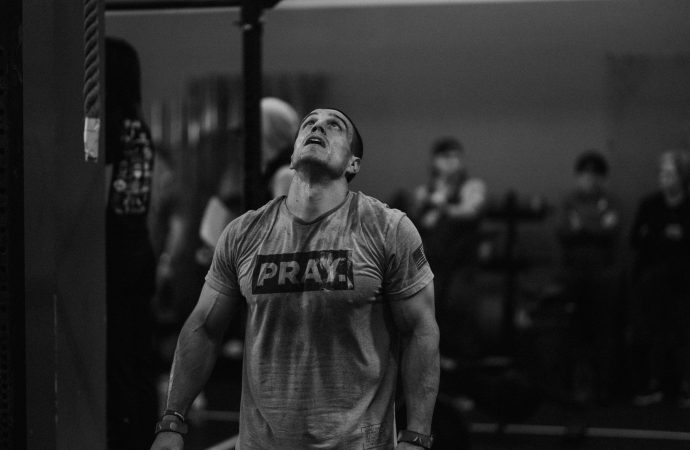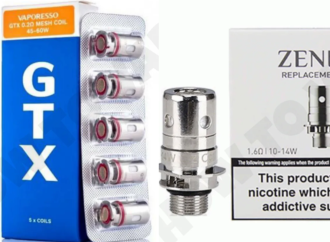Are you tired of spending hours at the gym without seeing any significant results? If so, it’s time to switch up your workout routine and give high-intensity interval training (HIIT) a try. Not only is HIIT an incredibly effective method for weight loss, but it also offers numerous other health benefits that will leave you
Are you tired of spending hours at the gym without seeing any significant results? If so, it’s time to switch up your workout routine and give high-intensity interval training (HIIT) a try. Not only is HIIT an incredibly effective method for weight loss, but it also offers numerous other health benefits that will leave you feeling stronger and happier than ever before. In this blog post, we’ll explore why HIIT should be your go-to exercise for shedding those extra pounds and transforming your body in record time. So grab your water bottle and let’s dive in!
What is high-intensity interval training?
High-intensity interval training, also known as HIIT, is a type of exercise that alternates between high-intensity and low-intensity intervals. HIIT is an effective way to burn calories and improve your cardiovascular fitness.
HIIT workouts typically last for 30 minutes or less. During a HIIT workout, you will alternate between periods of high-intensity exercise and periods of active recovery. The high-intensity intervals should last for 30 seconds to 1 minute, and the active recovery intervals should last for 1 to 2 minutes.
HIIT is a great choice for those who are looking to lose weight. HIIT workouts help you burn more calories in a shorter amount of time than other types of exercise. In addition, HIIT can help you continue to burn calories even after your workout is over.
The benefits of high-intensity interval training
High-intensity interval training (HIIT) has been shown to be an effective weight loss strategy. HIIT involves short bursts of intense activity followed by periods of rest. This type of exercise has been shown to increase metabolism and burn more calories than traditional cardiovascular exercise.
HIIT has a number of other benefits as well, including:
• Improved heart health
• Increased lung capacity
• Reduced risk of chronic diseases such as obesity and heart disease
• Improved mental health
The best exercises for high-intensity interval training
High-intensity interval training (HIIT) is a type of exercise that alternates between short periods of intense activity and brief periods of rest or recovery. HIIT can be used with any type of exercise, but it is often used with running, cycling, or rowing.
The benefits of HIIT are many: it burns more calories in less time than traditional “steady state” cardio, it improves your cardiovascular fitness, and it boosts your metabolism so you continue to burn calories even after your workout is over.
So what are the best exercises for HIIT? Here are a few suggestions:
1. Running: Start with a warm-up jog for five minutes, then alternate between one minute of sprinting and one minute of walking for 20 minutes. Finish with a five-minute cool-down jog.
2. Cycling: Start with a five-minute warm-up ride, then alternate between 30 seconds of all-out pedaling and four minutes of easy pedaling for 20 minutes. Finish with a five-minute cool-down ride.
3. Rowing: Start with a two-minute warm-up row, then alternate between 30 seconds of hard rowing and two minutes of easy rowing for 20 minutes. Finish with a two-minute cool down row.
How to get started with high-intensity interval training
High-intensity interval training (HIIT) is a type of exercise that alternates between short bursts of high-intensity activity and periods of rest or low-intensity activity. HIIT can be used with any type of exercise, but is most commonly done with cardio exercises such as running, cycling, or rowing.
The benefits of HIIT are numerous, but one of the most significant is that it helps you burn more calories in a shorter amount of time than other types of exercise. For example, you might burn 200 calories in 20 minutes with HIIT, while you might only burn 150 calories in the same amount of time if you were doing steady-state cardio.
If you’re looking to start HIIT to lose weight, there are a few things you need to keep in mind. First, HIIT workouts should be approached with caution if you’re new to exercise or haven’t worked out in a while. It’s important to ease into HIIT gradually to avoid injury and burnout.
Second, be sure to warm up before your HIIT workout by doing some light cardio and dynamic stretching. This will help prep your body for the intensity of the workout and help reduce your risk of injury.
Finally, don’t forget to cool down after your workout with some light stretching or walking. This will help your muscles recover and prevent soreness.
If you’re ready to give HIIT a try, there are plenty of resources available to help
Tips for making the most of high-intensity interval training
If you’re looking to maximize your weight loss, high-intensity interval training (HIIT) is the workout for you. HIIT combines short bursts of intense activity with periods of rest, and has been shown to be more effective at burning fat than traditional cardio exercises like running or cycling.
Here are some tips for getting the most out of HIIT:
1. Start with a warm-up: A brief 5-10 minute warm-up will help get your body ready for the intensity of HIIT. Try some light jogging or jumping jacks to get your heart rate up.
2. Go at your own pace: HIIT should feel challenging, but not impossible. If you find yourself feeling too fatigued during the workouts, take a break or slow down the intensity until you can finish the session without feeling completely exhausted.
3. Cool down afterwards: Just as important as warming up before HIIT is cooling down afterwards. A quick 5-10 minute cool down will help your body recover and prevent soreness the next day. Try some light stretching or walking to gradually bring your heart rate back down.
High-intensity interval training workouts
High-intensity interval training, or HIIT, is a type of exercise that alternates between short periods of high-intensity activity and recovery periods. HIIT has been shown to be an effective way to burn fat in a shorter amount of time than moderate-intensity aerobic exercise, making it a popular choice for people who are trying to lose weight.
There are many different ways to structure a HIIT workout, but a typical HIIT workout might involve running at a high intensity for 30 seconds followed by 1 minute of walking or jogging to recover. This cycle would be repeated for a total of 20 minutes.
HIIT workouts can be adapted to any fitness level by adjusting the intensity and duration of the intervals. For example, beginners might start with 30 seconds of walking followed by 30 seconds of jogging, while more experienced exercisers might do 60 seconds of sprinting followed by 60 seconds of recovery.
The key to getting the most out of HIIT is to push yourself hard during the high-intensity intervals while still being able to maintain good form. It’s also important to give yourself enough time to recover between intervals so that you don’t get too fatigued.
Conclusion
High-intensity interval training can be a great way to help you on your journey towards weight loss. Not only does it offer an effective exercise routine that will help burn calories, but it also encourages metabolism and increases energy levels for the entire day. By making HIIT a part of your regular exercise regimen, you can maximize the benefits of your workouts while ensuring that you get results faster than ever before. So try out this type of workout today and watch as the pounds start melting away!





















Leave a Comment
Your email address will not be published. Required fields are marked with *